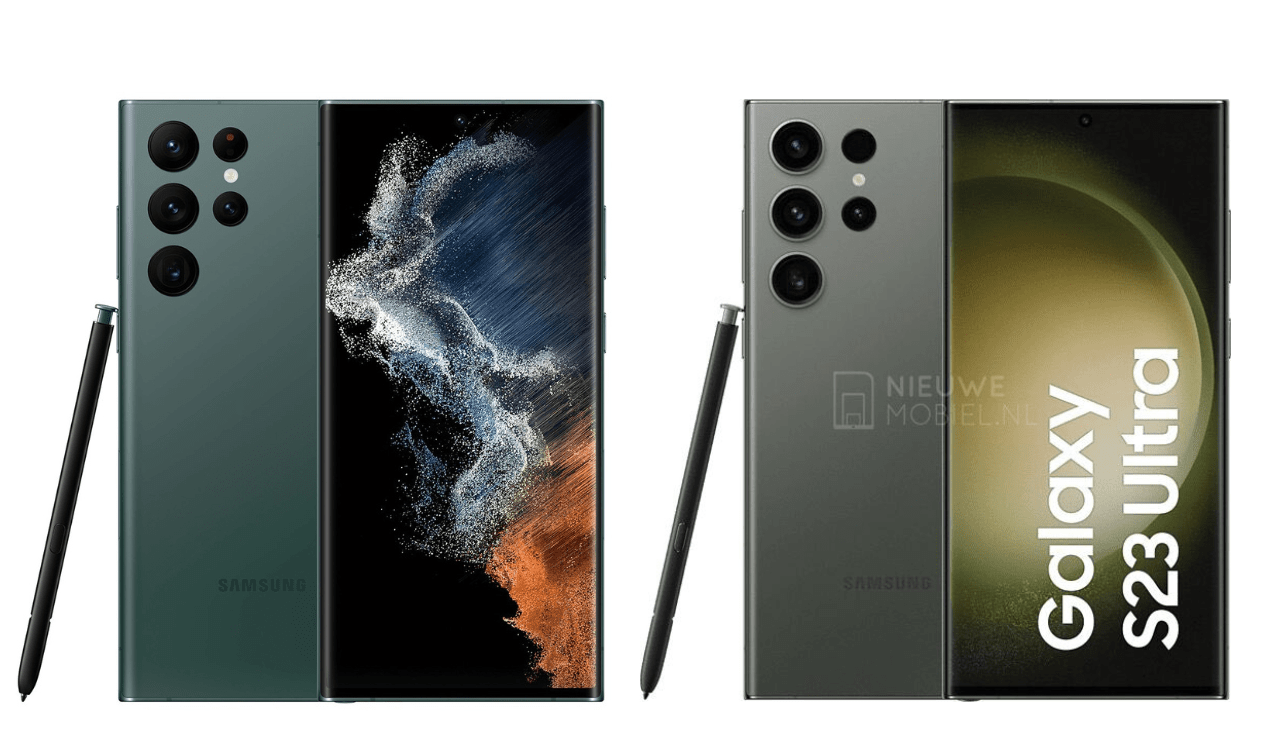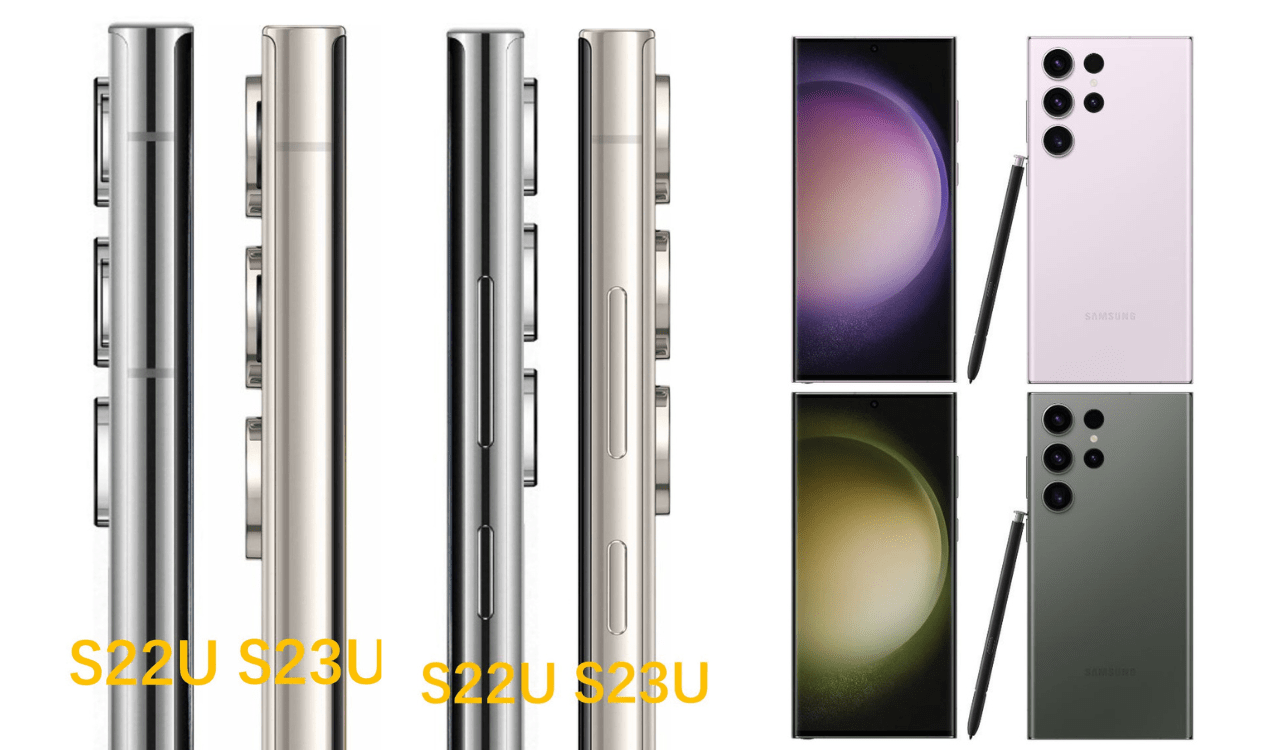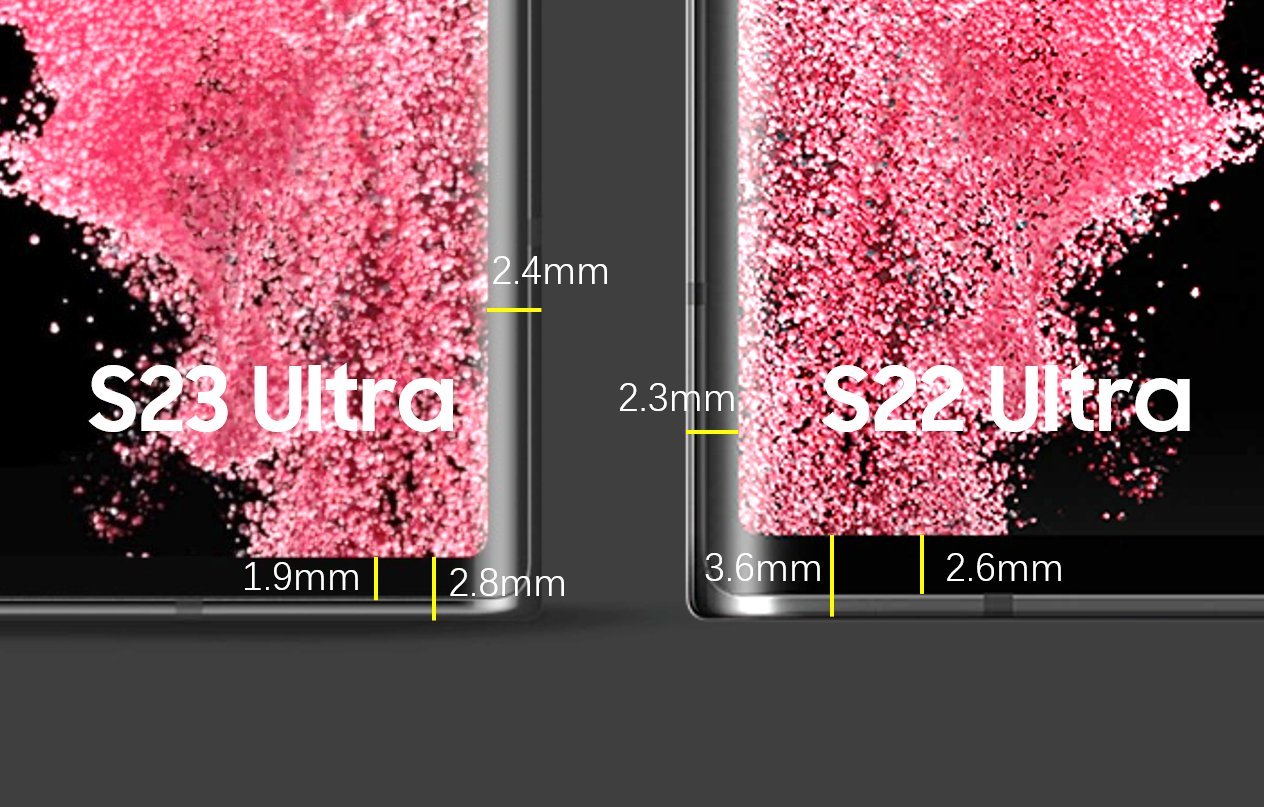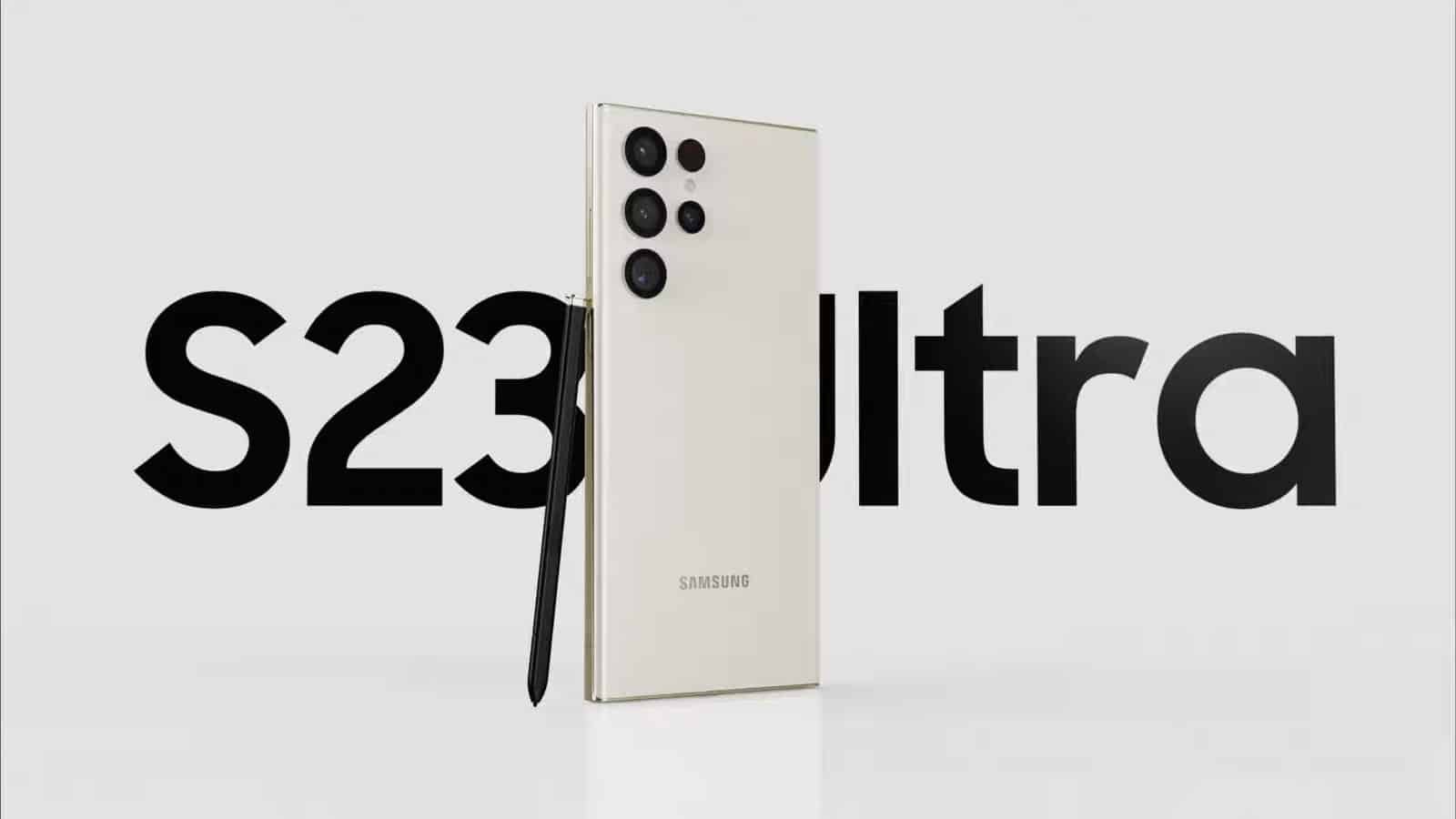What’s different about the Galaxy S23 Ultra from its predecessor, the Galaxy S22 Ultra? What’s more, do you think they deserve an upgrade?

On February 1st, the new S23 Ultra will be officially introduced, but there have already been several leaks and rumors that reveal virtually every detail. The S23 Ultra’s standout feature is its strategic shift toward using Qualcomm Snapdragon chips in all models, including those sold outside the United States. This brings an end to the agonizing split that had affected smartphone buyers for years. There are also upgrades to the camera system, including a new 200MP main camera that promises clearer shots at night.
The S23 Ultra sounds promising, what with its claimed enhancements including double the storage in the base version, improved video recording, and some pleasant interface updates.
In addition, the S23 Ultra, like its forerunner, includes a S Pen for your use.
Design: Why mess with perfection?
According to the leaking information, the new S23 Ultra model features a bigger frame and buttons that have been shifted ever-so-slightly downward and outside.
There is no shame in admitting that you cannot recognize the Galaxy S23 Ultra different from its predecessor.

Some hints can be found, but you’ll have to look closely. The most noticeable change is the new model’s flatter sides, which somewhat resemble the look of recent iPhones. However, the phone is still not fully flat, and there is still a slight curve at the edge for ergonomic purposes. The phone’s frame is now thicker than before, and this design makes it slightly less of a struggle to pick up from a flat surface.
They have a squared off look and feel, and are generally built similarly. All buttons are on the right side, and there is glass on the front and rear with an aluminum frame in the middle. The physical keys have been shifted slightly downward and made wider to make them less of a challenge to press.
The IP68 classification gives both phones the best protection against dust and water of any mainstream flagship. Furthermore, both have a USB-C port on the bottom but no 3.5mm headphone jack.

Both handsets feature sizable 6.8-inch displays, the latter of which is made all the more effective by the devices’ slightly bigger dimensions than those of a standard smartphone.
This is not the same set of screens, though. Compared to the S22 Ultra, which used an older M11 OLED screen, the S23 Ultra has a brand-new, state-of-the-art E6 OLED panel, which has improved qualities. The screen’s color cast and maximum brightness are slated for enhancements. The maximum brightness of the S22 Ultra model is 1,750 nits, and the S23 Ultra is predicted to reach 1,900 nits or even higher.
The LTPO technology both use is what allows for the constant updating. Samsung’s Dynamic AMOLED technology gives you a 1440p display at a refresh rate of 1–120 hertz.
There won’t be any major shifts to biometrics, we believe. Both phones have ultrasonic fingerprint scanners embedded in the display, which have earned a solid reputation for their dependability and speed. Both will include capability for image-based face recognition, which is convenient but ultimately less secure than 3D face unlock because of how easily faked photos can be.
Performance: It’s the most significant improvement in speed for a Galaxy flagship in years.
The updated Qualcomm Snapdragon 8 Gen 2 processor is the most noticeable upgrade to the S23 Ultra. Moreover, all Galaxy S23 Ultra devices, no matter where they are sold, are reported to be equipped with this processor by Samsung. Previously, Samsung only offered the Ultra with Qualcomm’s Snapdragon chip in the United States and a few other places.
The S23 Ultra tries to fix this, and as a result, it provides a compelling reason for consumers in Europe and elsewhere to upgrade.
In that case, what sets out the S23 Ultra’s Snapdragon 8 Gen 2 processor from the S22 Ultra’s Snapdragon 8 Gen 1 processor? Both chips use 4nm technology, however whereas the first generation was produced at a Samsung foundry, the second generation will be produced by TSMC. This difference in foundries may be significant, as TSMC is generally regarded as producing chips of superior quality. Improvements in power efficiency and enhanced performance will be readily apparent to end users. Win-win!
Preliminary benchmark results show that the new Snapdragon 8 Gen 2 CPU offers significant speed increases of almost 30% in both single-core and multi-core performance. These are the kinds of improvements that have been lacking in prior years, and they would bring the Galaxy S23 Ultra very near to the performance levels of Apple’s iPhone 14 Pro Max, which is currently the best in its class.
We believe that both the S23 Ultra and the S22 Ultra will adhere to Samsung’s remarkable promise of 4 years of major software upgrades and 5 years of security updates for Android devices. When you consider that many smartphones only receive software upgrades every three or two years, you can see how valuable this feature really is.
We assume that there will be no major software changes between the new S23 Ultra and the older model, and that it will ship with Android 13 flavored with Samsung’s One UI 5.1 interface.
Camera: The new 200-megapixel primary camera is a remarkable upgrade.
Samsung’s quad camera technology on the Ultra series has been very successful thus far, and it is the camera that ultimately determines whether or not a phone is considered a flagship.
Nonetheless, the new S23 Ultra surpasses even that. It keeps the same quad back camera system with main, ultra-wide, 3X zoom, and 10X zoom lenses, but improves the main camera.

Leaks suggest that low-light photos and videos will also see significant improvements thanks to the upgraded 200MP image sensor. In terms of the other cameras, it is believed that they will continue to use the same hardware, but with updated software.
Ice Universe alleges that the S23 Ultra’s new 200MP camera will utilize a modified Samsung Isocell 1/1.3 sensor with an f/1.7 lens aperture.
The whole point of this sensor is, of course, to maximize the number of usable pixels by means of pixel binning. By default, 12MP resolution will be maintained thanks to Samsung’s adoption of 16-to-1 pixel binning.
This supposedly leaked camera sample from the S23 Ultra reveals a significant increase in detail, so count us among the thrilled.
New video features have been rather quiet, but we anticipate that Samsung will respond to some of the capabilities that competitors have introduced. It’s possible that Samsung will introduce its own version of Apple’s new Action Mode for steadier video recording with the iPhone 14 Pro, and Google’s object removal tool is a handy addition to its own suite of apps.
Battery Life: Keeps the battery size the same, but may performance be enhanced?
It has been reported that the battery capacity of the S23 Ultra and the older S22 Ultra is identical at 5,000 mAh.
Nowadays, this is the standard for Android flagships, and anything less sounds like a bummer. We don’t see a major improvement in battery life, but the S23 Ultra’s more efficient chipset may help it achieve that goal this year.
Both of these phones will last for a day at most.
As soon as we receive the phones, we will do our own battery tests and share the results here so you can learn as much as possible about the actual battery life.
Also, we don’t see any adjustments to charging. The industry standard has shifted, and none of these phones comes with a charging cable.
To get the maximum 45W wired charging speed on either device, a fast charger and a dedicated 5A cable are required. Charging each phone should take little longer than an hour.
Wireless charging at speeds of up to 15W is supported by both of these devices.
Summary

Although the Galaxy S23 Ultra is superficially similar to its predecessor, we are very much looking forward to it due to the significant improvement in processing power and the introduction of an innovative camera technology.
It’s still too soon to say whether or not customers of the S22 Ultra should upgrade, but with the increased processing power and the potential for a far better camera, this could be one of the rare occasions when we do recommend it.
To what do you look forward in the Galaxy S23 Ultra?